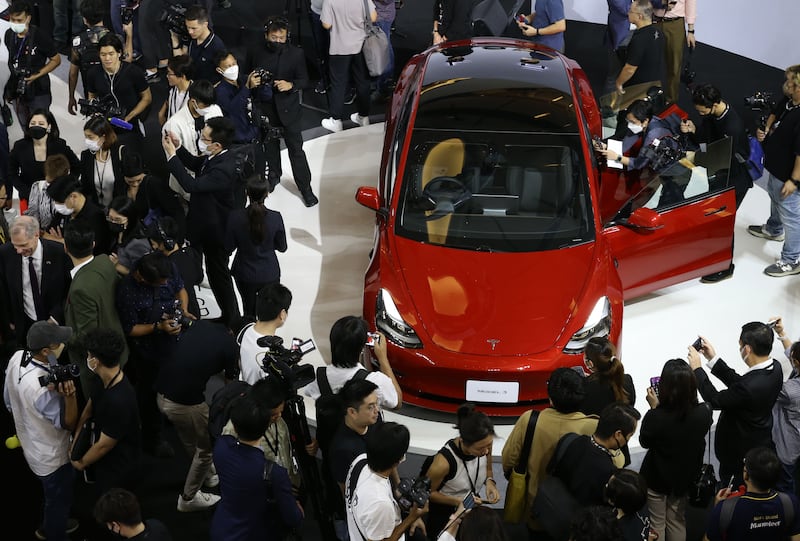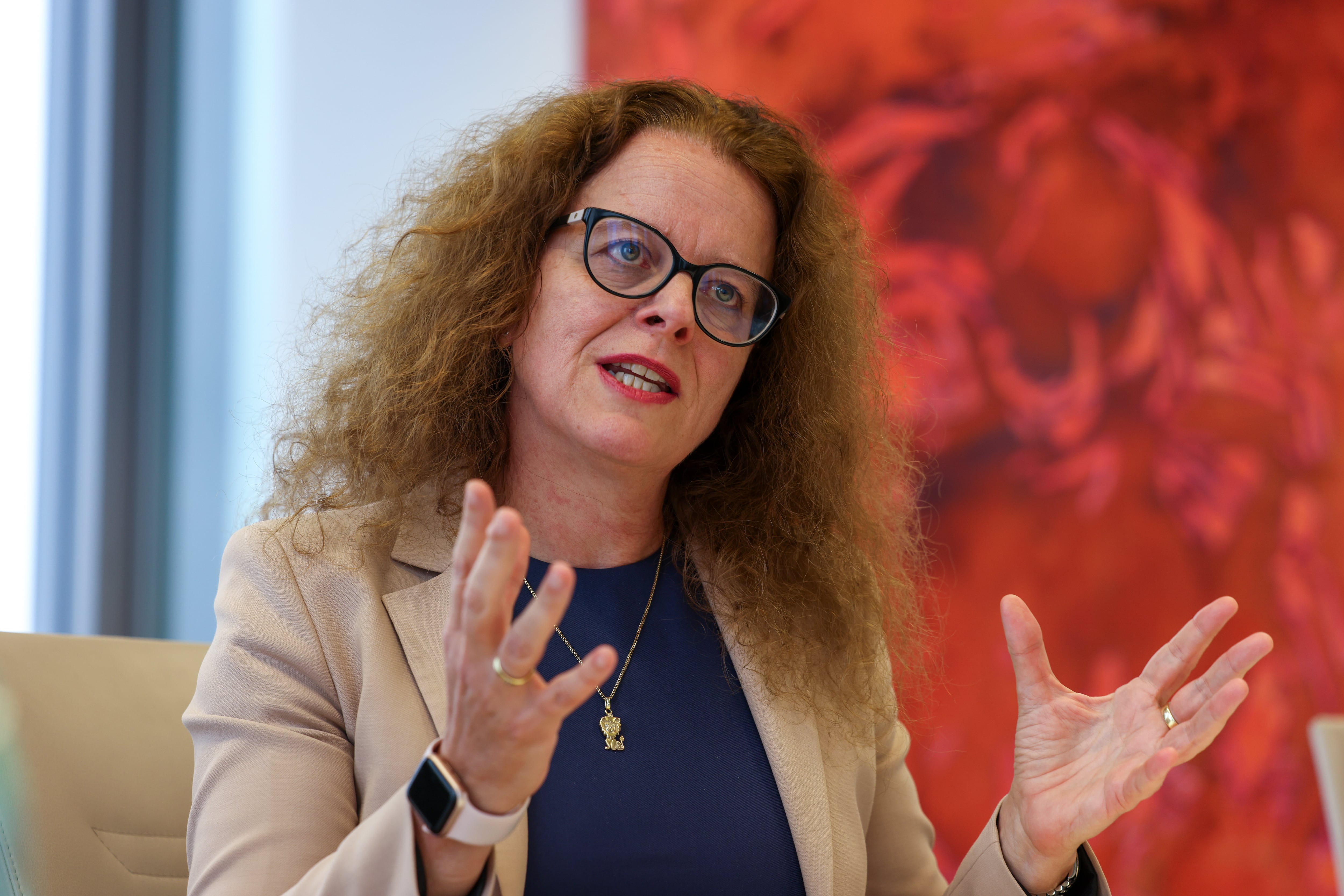When we decided it was time for lunchChuck Cook tapped the digital display on the dashboard of his Tesla Model Y and told the car to drive us to the Bearded Pig, a barbecue joint on the other side of town.
“I don’t know how it’s gonna do. But I think it’s gonna do pretty good,” he said with the folksy, infectious enthusiasm he brought to nearly every moment of our daylong tour of Jacksonville, Florida, in a car that could drive itself.
For more than two years, Tesla has been testing a technology it calls Full Self-Driving with Cook, a 53-year-old airline pilot and amateur beekeeper, and a limited number of car owners across the country.
Tesla has long offered a driver-assistance system called Autopilot, which can steer, brake and accelerate its cars on highways. But Full Self-Driving is something different. It is an effort to extend this kind of technology beyond highways and on to city streets.
READ MORE
This summer, Elon Musk, the company’s CEO, said the system would be available in more than 1 million cars by the end of the year. In August, we spent a day driving around with Cook and his Tesla to assess the progress of this experimental technology.
Over six hours his car navigated highways, exit ramps, city streets, roundabouts, bridges and parking lots. With his hands near or on the wheel and his eyes on the road, the car attempted more than 40 unprotected left-hand turns against oncoming traffic. It kept us on the edge of our seats.
All the while, video cameras recorded everything we experienced, including a GoPro mounted on the roof as well as the eight cameras installed by Tesla on the front, back and sides of the car.
The most telling moment came as the car drove us to lunch. After navigating heavy traffic on a four-lane road, taking an unexpected turn and quickly remapping its route to the restaurant, the car took a right turn on to a short street beside a small motel. But as the Tesla struggled to make sense of its environment, veering from the road into a motel parking lot, Cook had to retake control.
After driving around the motel, the car almost immediately made the same mistake, jerking into the lot this time. It was sobering to see how close we came to hitting a parked car after we rolled over a low curb separating the parking lot from the road. Even the car’s internal display suggested that the car was struggling to distinguish the curb.
Tesla is constantly modifying the technology, working to fix its shortcomings. Since the day we drove around Jacksonville, the company has twice released new versions of the technology that show signs of improvement. But the moment in the motel parking lot showed why it may be a long time before cars can safely drive anywhere on their own.
It is very easy to solve the first 90 per cent of the problem, very hard to solve the last 10 per cent.
— Andrew Clare, chief technology officer of Nuro
The experiences of beta testers like Cook are a window into the enormously ambitious and expensive bet that Tesla is making on self-driving technology. It and other companies are investing billions into researching and developing autonomous vehicles – taxis that can ferry us around town, trucks that will deliver our online orders and maybe even one day cars that will take our children to soccer practice.
Elon Musk and Tesla did not respond to requests to participate in this story. But Cook’s Model Y provides a glimpse of the future we are moving toward, which may prove to be safer, more reliable and less stressful – but is still years away from reality.
Tesla’s technology can work remarkably well. It changes lanes on its own, recognises green lights and is able to make ordinary turns against oncoming traffic. But every so often, it makes a mistake, forcing testers like Chuck to intervene.
“That moment shows that the car can only know what it is trained to know,” Cook said of the sudden turn into the parking lot. “The world is a big place, and there are many corner cases that Tesla may not have trained it for.”
Experts say no system could possibly have the sophistication needed to handle every possible scenario on any road. This would require technology that mimics human reasoning – technology that we humans do not yet know how to build.
Such technology, called artificial general intelligence, “is still very, very far away,” said Andrew Clare, chief technology officer of the self-driving vehicle company Nuro. “It is not something you or I or our kids should be banking on to help them get around in cars.”

In the tight-knit community of Tesla enthusiasts, stockholders, bloggers and social media mavens, Chuck Cook is famous. This summer, Musk noticed the meticulous way he explored the boundaries of the technology in a series of YouTube videos.
Cook had been posting online clips of his Tesla trying to navigate an unprotected left turn near his home in Jacksonville. (Cook uses money from YouTube ads and donations from viewers to pay for cameras and other equipment.) To make this turn, the car must pass through three lanes of traffic approaching from the left, squeeze through a gap in the median and merge into three more lanes of traffic approaching from the right.
[ Tesla’s troubles pile up while Elon Musk is distracted with TwitterOpens in new window ]
Sometimes, the car made the turn with aplomb, edging into the thoroughfare and waiting for a moment when it could speed into a far lane. Other times, it got stuck beside the median in the middle of the turn – its rear bumper jutting into the oncoming traffic.
Soon, Musk noticed the videos and vowed to solve what Tesla enthusiasts began calling “Chuck’s turn.” In the weeks that followed, Tesla equipped several test cars with a new version of its self-driving technology and sent them to Cook’s neighbourhood, where they spent several weeks testing the new software and gathering data that could help improve it.
Cook and I spent a good chunk of our day asking his car to navigate the turn named after him. Each attempt was different from the last. Sometimes, the cars approached much faster from the left. Other times, from the right. Sometimes, the gap between the two was enormous. Other times, it was tiny.
Not long after that day in Jacksonville, Tesla released a new version of its software to Cook and other beta testers. The car’s display now showed a blue overlay that indicated what was a safe zone in the median.
When facing heavy traffic, it could navigate Chuck’s turn with a precision that had not been possible in the past. So if it needed to stop next to the median, it would position itself so that traffic could safely pass both in front and behind.
Chuck’s turn is just one scenario among the endless scenarios a Tesla might face on roadways.
[ Demystifying Artificial intelligenceOpens in new window ]
Some are relatively common. Companies like Tesla can test and retest their technologies in these situations until they are confident a car can handle them safely. But other scenarios are rare and unexpected – what industry experts call “edge cases”.
“It is very easy to solve the first 90 per cent of the problem, very hard to solve the last 10 per cent,” Clare said, referring to the decades-long effort to create self-driving cars. “You need to be able to handle those edge cases gracefully.”
After releasing the new beta, Musk softened his claims about the immediate future of the technology. He now says that the technology will not be widely available until next year – and that regulators are unlikely to approve it for use without hands on the wheel. Autopilot still requires this oversight.
Federal regulators have spent the past several months investigating a series of crashes involving Autopilot, and they have not yet revealed the results. Safety experts worry that the arrival of Full Self-Driving will lead to more accidents.
“It is inevitable,” said Jake Fisher, senior director of Consumer Reports’ Auto Test Center, who has used the technology. “The problem comes as this system gets better and people get complacent. It will still do the unexpected.”
– This article originally appeared in The New York Times.



















